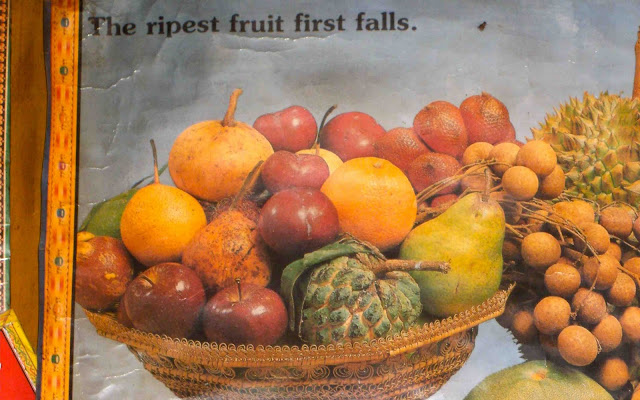Saturday, August 20, was perhaps the best day of that entire week for me. Warren and I found ourselves lugging quite an impressive accumulation of donations out to our taxi for delivery to the Living Way Orphanage. Among the many things generously given were:
- Two suitcases packed full of pencils, markers, sketching paper for blooming artists, note paper, geometry sets, reading books, school clothes, backpacks, socks and underwear, shoes, toothbrushes, toothpaste, soap, sanitary napkins
- Several bags of donated clothes
- $130 worth of fresh food, treats, school supplies, personal hygiene products and soccer balls purchased here in Naivasha. In Naivasha, $130 goes a long way!
When we arrived at the orphanage, I learned that most of the children were on a one-day field trip to Nakuru, a neighbouring city. The theme of the field trip: attend church in a new setting. While I was sad not to see everyone together, I satisfied myself with the knowledge that it was a good, wholesome trip and everyone needs a change of scenery from time to time.
Because we arrived fairly early, many of the remaining children were still sleeping as we pulled in. As we opened the boot and slowly began unloading our offering, word spread and the children began to trickle out of their bedroom. Soon we had a pretty good gathering, with everyone being willing to help carry the supplies to the appropriate location, from where they would be distributed equally to all of the children when their counterparts returned from church. As we unloaded, there were two bags that we deliberately saved until last.
The first contained some paper and charcoal pencils, especially designed for sketching. You see, the orphanage is full of artistic children, whose art is proudly displayed on the walls of their bedroom. One such child is Rueben. I wrote about his interest in drawing in my first blog about the Living Way and an artist in Canada was struck. She and her husband wanted to give some art supplies so that the children can continue do develop their talent. Although I handed the sketching paper, charcoal pencils and Canadian Wildlife Magazines (for inspiration) to Reuben, I made sure that he and all of the other children knew that it was a gift for everyone. They were excited.
Once everything else had been unpacked, we pulled out our second special bag. This one contained 2 soccer balls. As the balls appeared, you could see the smiles beginning and the excitement level starting to rise. I am so pleased that we brought them, because after everything had been put away, we had a passionate game of soccer! The fact that I lack all foot-eye coordination seems not to have been a problem. It was still a blast and a great way to end our visit.
Because our final donation total ended up being $1017, after our purchases in Naivasha we were left with about $900 to give to Sarah to support the construction of the fishpond and fence around the pond at Rubiri Primary School. It wasn’t until yesterday that I was able to visit Sarah and deliver our offering. As usual, she was cheerful and full of energy and very grateful for the donation to what she feels is very important project. Rather than me babbling about our visit, I will share with you the email I received from Sarah shortly after I left:
“Thank you so much for the donation towards the fence around the new fish ponds to stop the children from falling in, etc. It is more than gratefully received and I will tell the Head Teacher, Peter Kimani, about it tomorrow when I go up to take photos of our very first meal for the children. I am just so excited about the new kitchen as it was just heart breaking to go up to the school at lunch time and see all the kids who didn't have food hiding out in the class rooms so that they didn't have to watch the kids, who did have food, eating. If it is anything like the other school that I helped to get a feeding programme going in then the grades should start going up as from the beginning of this term! How on earth a child is expected to learn on one meal a day (usually in the evening) I don't know but when the family can't afford the food for more they consider themselves lucky to get even that. It will be a big day tomorrow! I have attached some photos of the kitchen as it was at the beginning of last week. As you can see there is still a way to go and we will definitely still be putting up shelves etc. even as we serve our first meal, but we were determined that our lunch programme was going to start on the first day of term, come what may.
I will keep you posted on the fishpond progress. You will see that even the children were involved in the digging of the pond, as well as the parents. When there is a project on and no spare money everyone gets involved.
Cheerfully,
Sarah”
So, I would say our campaign was a big success and I can’t tell you how excited it made me that everyone was so eager to help. I will be sure to post pictures of the progress and lunch programme at Rubiri Primary School as they become available.
Asante sana! (“Thank you so much” in Swahili!”)



































